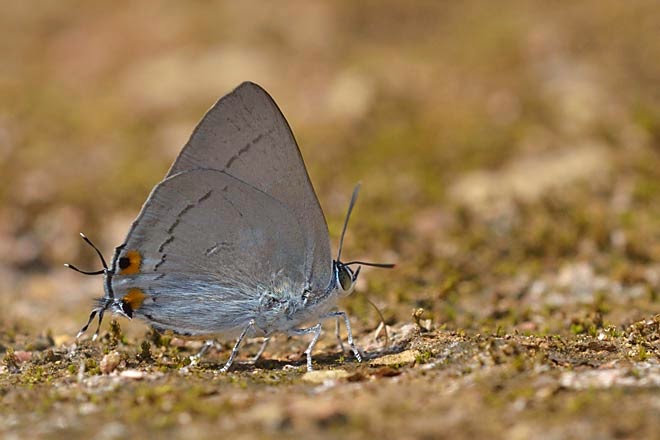My first shot of a skipper is the Chestnut Angle (Odontoptilum angulatum angulatum). It came down to puddle on the ground on our first day at Chiang Dao.
This is Thoressa masoni (The Golden Ace), a common species at Chiang Dao.This is the Northen Ace (Thoressa cerata). It was rather skittish and alert, scooted off rapidly just after I had taken a shot.
The Pithauria species are generally larger and more robust in built than many other brown skippers. This Light Straw Ace (Pithauria stramineipennis stramineipennis) was so co-operative on the ground that I could not resist taking some shots of it.
This is a pristine Light Straw Ace skipper. It rested on the table top for me to compose a few shots.According to Dr Seow, he believed that this is the Dark Straw Ace (Pithauria murdava).
This appears to be the Branded Straw Ace (Pithauria marsena). I could not remember why I took only one shot of it.
The Pale Marked Ace (Halpe hauxwelli ) is another common species at Chiang Dao.
A different specimen was on the ground.
This is another look-alike Ace, the Silver-breast Ace (Sovia albipecta) I guess.
This is the Long-banded Ace (Halpe zola zola) which was shot outside an abandoned house overlooking the puddling ground.
I found this yellow tiny Tiger Hopper (Ochus subvittatus) rather cute because of the body and wing shape.
This is the Long-banded Ace (Halpe zola zola) which was shot outside an abandoned house overlooking the puddling ground.
I found this yellow tiny Tiger Hopper (Ochus subvittatus) rather cute because of the body and wing shape.
Les pointed out to us that this was not a common skipper. So I took some shots of the Banded Bush Hopper (Ampittia maroides)
Perhaps, one of the highlights we had at Chaing Dao on our last day was the excitement created by the Pale Green Awlet (Burara gomata gomata) - thanks to Antonio who spotted it first. It went hiding but came back a few times in the late afternoon.
Sorry to say that I tended to ignore most of the skippers on the puddling ground. I might have missed many other species. In fact, I didn't get to shoot many lycaenids in this trip too as most of them looked familiar to me.
I managed to snap just two shots when the Bi-Spot Royal (Ancema ctesia ctesia ) came down to puddle for a few seconds - it never stayed still and kept walking around.
I managed to snap just two shots when the Bi-Spot Royal (Ancema ctesia ctesia ) came down to puddle for a few seconds - it never stayed still and kept walking around.
This is the Silver Royal (Ancema blanka minturna). I didn't know when it appeared on the ground but it certainly disappeared really fast from my sight.
There were many Prosota species on the puddling ground - one of them was the tailless Banded Line Blue (Prosota lutea sivoca ) which can be identified quite easily due to its ground colour of the wings.
A couple of the Barred Lineblue (Prosotas aluta coelestis) was parading in front of me.
The Common Line Blue (Prosotas nora ardates) was really common on the ground. Hoping that it might be other look-alike species, I just snapped a few shots.
Two different individuals of the Tailless Line Blue (Prosotas dubiosa indica).
A small Margined Lineblue (Prosotas pia marginata) was amongst a few other Blues.
At the higher ground where we parked our care, a Blue Tit (Hypolycaena kina kina ) came down to entertain some of us but not for long.
However, this Dark Cupid Dark Cupid (Tongeia potanini potanini) was more obliging; it remained in the vicinity for a longer period of time - but I was a bit lazy to go for more shots.
A long-tailed lycaenid, the Common Imperial (Cheritra freja evansi), a different subspecies from what we have in Singapore, landed in front of me. I went down to take snap this shot.







.jpg)
.jpg)
%2B.jpg)

.jpg)



.jpg)



.jpg)



.jpg)
..jpg)

What an amazing variety of skippers. In Europe they are all a little dull, but those are amazing. My favourites are always the lycaenids, though. What a fantastic selection you saw. Those Line Blues are great, but I really love the Dark Cupid.
ReplyDelete